Folk Music Holidays
31 July 2006 July and August are official vacation months here, which makes them prime time for music festivals and other summer-time gatherings. Last week I made it to a couple nights of the Folkové prázdniny (Folk Holidays) music festival in the small town of Náměšť nad Oslavou about 50 kilometers west of Brno. The concerts were held in the courtyard of the neo-Renaissance chateau overlooking the town. The square of the town features lovely Baroque statues, a fountain, and a church. A Baroque bridge lined with funky statues carrying shields, organs, and castles leads across the river toward the chateau. The festival was a great combination of the best of local Czech and Moravian music and some wonderful international folk and world music groups.
July and August are official vacation months here, which makes them prime time for music festivals and other summer-time gatherings. Last week I made it to a couple nights of the Folkové prázdniny (Folk Holidays) music festival in the small town of Náměšť nad Oslavou about 50 kilometers west of Brno. The concerts were held in the courtyard of the neo-Renaissance chateau overlooking the town. The square of the town features lovely Baroque statues, a fountain, and a church. A Baroque bridge lined with funky statues carrying shields, organs, and castles leads across the river toward the chateau. The festival was a great combination of the best of local Czech and Moravian music and some wonderful international folk and world music groups. Monday night saw an eclectic lineup of performers that was a little microcosm of the festival's eclecticism. When I arrived, the Hungarian group Parno Graszt was on stage, heating things up with incredibly energetic gypsy music and dance. They were an incredibly versatile group that seem to share in spirit more with Zydeco and Mariachi musics than European folk music. There was a lot of flamenco spirit, too. They sang at the tops of their lungs, banged on milk cans, strummed guitars, threw in a bit of body percussion, and of course, kicked up their heels. It was high energy and intense.
They were followed by the Tuvan group Huun-Huur-Tu. At least in philosophical and aural impact, one could have hardly picked groups who were more at odds. Their music gives you a sense of space. They talk about it being about landscape and, somehow it seems much more like landscape than Moravian music: how could you have landscape without space? You can’t really dance on a landscape because it’s too far away. But those are not the issue at hand. There was the sort of spiritual focus during their performance that happens when the audience is trying to listen closer and closer in order to sap the music of every nuance they can. I haven’t had an intense experience like that for a while at a live concert.
The final group of the evening was Čechomor from the Czech Republic. Čechomor has become quite popular here playing older folk songs with new instrumentation. My favorites are their early albums Dověcnosti and Mezi horami when they favored acoustic instruments, though I also like their recordings with punk rocker Jaz Coleman and the Czech Philharmonic. (I know, you're thinking it sounds like "The London Pops Plays The Rolling Stones," but Čechomor’s project was very musically compelling.) Their collaboration with folksinger Jaromír Nohavica and the film Rok ďábla also helped give a different spin to their collaborations.* Recently, they’ve turned to over-amplified electronic and, despite being billed as "akust." (which I assumed meant "acoustic") at this concert, they played songs from their most recent album very loudly. They're still a fun group, but following two intense, compelling, refreshing, and though-provoking acts, it seemed that they're riding the coat tails of their earlier success. Given that the speakers were turned up too loud and that I was expecting an acoustic performance, the end of the night left me unsatisfied.
 This festival had a far different feel than the festivals I attended earlier this summer. People, including me, camped at the other ones, but there was not a tea house set up next to the campsites at the other festivals. Tea houses are definitely a sign of the alternative, dreadlocked, hookah-smoking crowd. It was a nice place to sit to catch a jam session (at decent hours and not only after midnight after all the participants were well-pickled with slivovice) or have breakfast that did not consist of a sausage, mustard, and bread. (What a concept! And I did take advantage of some of their delicious unsweetened/sweeten-to-your-taste cocoa for breakfast.) People also seemed generally light hearted and it was a community event. A symposium accompanies the festival every year, which was also comforting since it showed that the contents of the festival were not yet officially sanctioned but still under discussion and that discussion was open to everyone who cared to show up and to chime in (in Czech or English). It was also nice to see local groups (and not all were as well known as Čechomor) performing alongside non-Czech groups—rather than celebrating for itself only, the audience was given a chance to compare, contrast, reflect, and think about relationships between local and global cultures.
This festival had a far different feel than the festivals I attended earlier this summer. People, including me, camped at the other ones, but there was not a tea house set up next to the campsites at the other festivals. Tea houses are definitely a sign of the alternative, dreadlocked, hookah-smoking crowd. It was a nice place to sit to catch a jam session (at decent hours and not only after midnight after all the participants were well-pickled with slivovice) or have breakfast that did not consist of a sausage, mustard, and bread. (What a concept! And I did take advantage of some of their delicious unsweetened/sweeten-to-your-taste cocoa for breakfast.) People also seemed generally light hearted and it was a community event. A symposium accompanies the festival every year, which was also comforting since it showed that the contents of the festival were not yet officially sanctioned but still under discussion and that discussion was open to everyone who cared to show up and to chime in (in Czech or English). It was also nice to see local groups (and not all were as well known as Čechomor) performing alongside non-Czech groups—rather than celebrating for itself only, the audience was given a chance to compare, contrast, reflect, and think about relationships between local and global cultures. 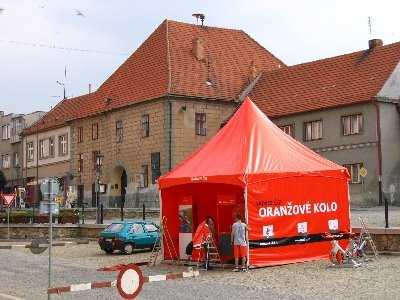 A rather less positive sign of this "global" outlook was sponsorship by the ČEZ Group. The company's orange advertising propaganda was ubiquitous. ČEZ is the Czech Republic's major energy company—it was formed in 1992 when the Czech energy companies were privatized from the Fund of National Ownership, is among the ten largest energy companies in Europe, controls almost one hundred other related companies, is valued at over 10 billion USD, and since 2004 has been a multinational. It's nice to know that they give something back to the communities they affect, but that didn’t decrease the strangeness of the juxtapositions: toddlers played under orange ČEZ umbrellas and carried orange ČEZ ballons past handmade wood-fired pottery, or ČEZ-sponsored outings to tour the Dukovany Nuclear Power Station (which provides 20% of the Czech Republic's electricity annually) coupled with tours of the nearby Dalešice "micro-brewery."
A rather less positive sign of this "global" outlook was sponsorship by the ČEZ Group. The company's orange advertising propaganda was ubiquitous. ČEZ is the Czech Republic's major energy company—it was formed in 1992 when the Czech energy companies were privatized from the Fund of National Ownership, is among the ten largest energy companies in Europe, controls almost one hundred other related companies, is valued at over 10 billion USD, and since 2004 has been a multinational. It's nice to know that they give something back to the communities they affect, but that didn’t decrease the strangeness of the juxtapositions: toddlers played under orange ČEZ umbrellas and carried orange ČEZ ballons past handmade wood-fired pottery, or ČEZ-sponsored outings to tour the Dukovany Nuclear Power Station (which provides 20% of the Czech Republic's electricity annually) coupled with tours of the nearby Dalešice "micro-brewery." Overall, I give this festival the highest recommendation of any that I've been to so far. It was more expensive &mdash about 1500 Czech crowns (over 60 USD) for a complete ticket or 300 crowns per night—but it lasted for the whole week and the camping was a third the price of anywhere else (10 crowns per tent per night; showers were available for an additional 10 crowns).
View more photos from the festival at flickr in the Folkovky pool.
*Be sure to check out Kolo Kolo on Nohavica; the bulk Julia's Nohavica posts are gathered here.

Tags: music, festivals, Czech, moravia




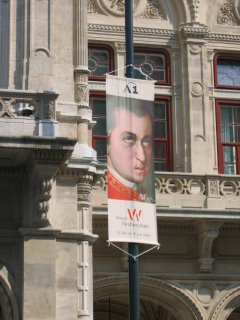
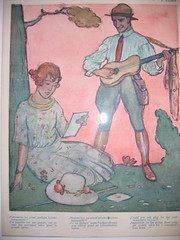
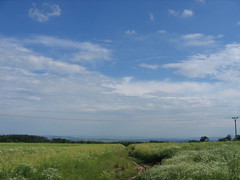





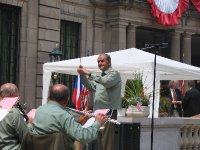
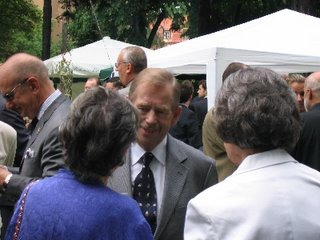
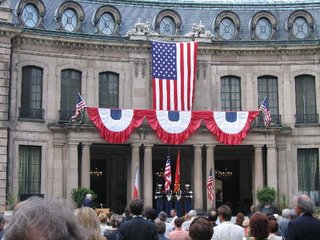


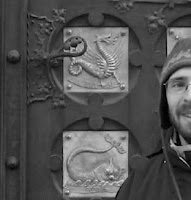 A graduate student in music and anthropology writing a dissertation about music in Moravia, the eastern third of the Czech Republic. At some point, the Czech Republic's "second city" (that would be Brno) captured my attention, and I've since been blogging about events, arts, music, and other stuff—basically whatever interests me in and around the cityscape. I'm not living in Brno now, but I keep up with the cultural pulse from afar as best I can.
A graduate student in music and anthropology writing a dissertation about music in Moravia, the eastern third of the Czech Republic. At some point, the Czech Republic's "second city" (that would be Brno) captured my attention, and I've since been blogging about events, arts, music, and other stuff—basically whatever interests me in and around the cityscape. I'm not living in Brno now, but I keep up with the cultural pulse from afar as best I can.

